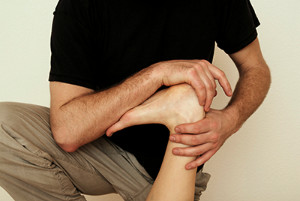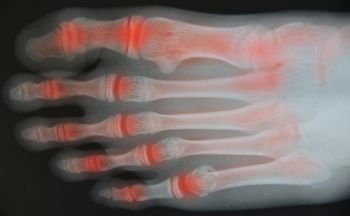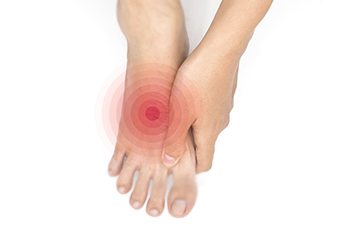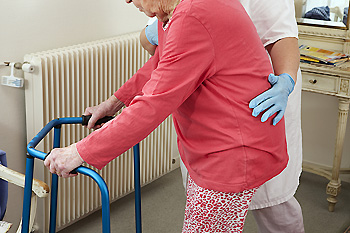
Hammertoe is a foot deformity that is noticeable as the second or third toe bends up at the middle joint, forcing the end of the toe to point down. Children may develop this condition from wearing shoes that are too tight in the toe area. The child may complain their toes are painful, which may be a result of the toe rubbing against the shoe while walking. When shoes are worn that do not fit properly, the muscles and tendons in the toes may tighten. This can cause difficulty in straightening the toe muscles, and walking may be compromised. It is beneficial to address this condition as early as possible, and temporary relief may be found when larger shoes are worn. If the hammertoe toe is severe, it may help to wear toe splints, in addition to gently stretching your child’s toes. If your child has developed hammertoe, it is strongly suggested to speak to a podiatrist as quickly as possible who can offer you correct treatment methods.
Hammertoe
Hammertoes can be a painful condition to live with. For more information, contact one of our podiatrists from Lewis Wolstein, DPM, P.C. & Associates. Our doctors will answer any of your foot- and ankle-related questions.
Hammertoe is a foot deformity that affects the joints of the second, third, fourth, or fifth toes of your feet. It is a painful foot condition in which these toes curl and arch up, which can often lead to pain when wearing footwear.
Symptoms
- Pain in the affected toes
- Development of corns or calluses due to friction
- Inflammation
- Redness
- Contracture of the toes
Causes
Genetics – People who are genetically predisposed to hammertoe are often more susceptible
Arthritis – Because arthritis affects the joints in your toes, further deformities stemming from arthritis can occur
Trauma – Direct trauma to the toes could potentially lead to hammertoe
Ill-fitting shoes – Undue pressure on the front of the toes from ill-fitting shoes can potentially lead to the development of hammertoe
Treatment
Orthotics – Custom made inserts can be used to help relieve pressure placed on the toes and therefore relieve some of the pain associated with it
Medications – Oral medications such as anti-inflammatories or NSAIDs could be used to treat the pain and inflammation hammertoes causes. Injections of corticosteroids are also sometimes used
Surgery – In more severe cases where the hammertoes have become more rigid, foot surgery is a potential option
If you have any questions, please feel free to contact our office located in Co-Op City, NY . We offer the newest diagnostic and treatment technologies for all your foot care needs.









